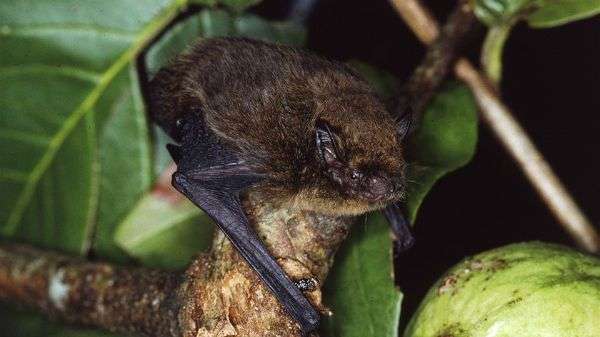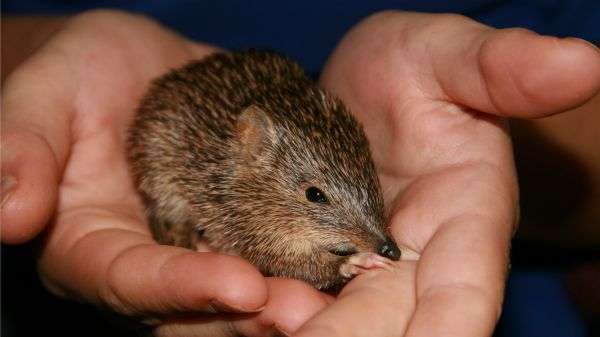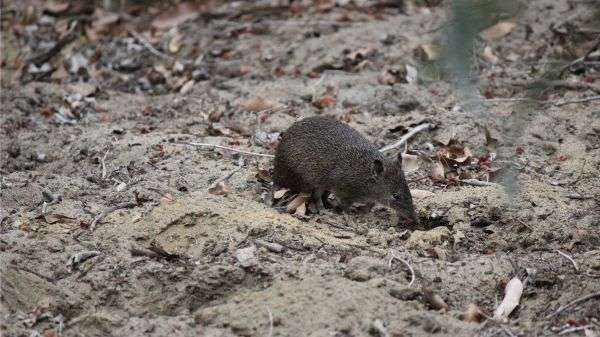Christmas Island pipistrelle (Pipistrellus murrayi)
People respond well to photos of cute and cuddly animals, which is why these types of images are never far away in the media.
But as Murdoch University Associate Professor Trish Fleming explains, the animals on the other end of the spectrum—the ones with a face only a mother could love—need our attention and respect just as much.
Only six years ago, the last Christmas Island pipistrelle (Pipistrellus murrayi) breathed its last breath.
The demise of this microbat species was watched by the world as we 'monitored the species to extinction'.
Politicians alone could not save this species—it was not a priority for investment of funding.
Community alone could not save this species—they needed the tools to work with.
And scientists alone could not save this species as they needed to be empowered to act.
We can't simply focus research and funding on large, charismatic animals. Small (and yes, ugly) animals need attention too.
Most people would be surprised to learn that Australia is home to more than 70 native rodent species, and about the same number of bats.
Bats and native rodents make up a third of our total number of mammal species, and yet for most species (apart from a few urban fruitbat species), science has done barely more than catalogue their existence.
At least three native rodents are described only from bone fragments left in caves where owls roost.
They were gone before we got to study these species, so we know virtually nothing about their biology.
The same is largely true for most Australian bats and native rodents.
Here in Perth, the western false Pipistrelle (Falsistrellus mackenziei) forages around the canopies of healthy tuart trees.
We are losing tuart trees on a massive scale, across the landscape.
The summer of 2010 was the driest and warmest on record, and we lost wide expanses of forest.
A golden bandicoot. Credit: Judy Dunlop
Every year, our climate has been changing more rapidly that we could have expected.
Animals such as F. mackenziei will be extremely vulnerable to these climate changes.
When we lose whole forests, we also lose habitat for microbats.
We don't understand the full impact of this loss, but we know that small insectivorous bats can eat up to 1,000 mosquitos in an hour (4,000 for nursing females).
Losing bats from our environment means less control over mosquito numbers.
Australia has witnessed more mammal extinctions than anywhere else in the world over the last two centuries.
More than half of the world's now extinct animals were once Australian residents.
Animals, weird and wonderful, some that were recorded as super-abundant by early European settlers, have now disappeared forever.
For many of these species, we don't even know why they died out. In addition to extinctions, Australian mammals such as the woylie (Bettongia ogilbyi), boody (Bettongia lesueur) and bilby Thylacomyidae are restricted to much small ranges.
Boodies used to be found across 70 per cent of the continent; today, without translocation, boodies would only be found on offshore islands.
Farmers used to poison these 'pests' by their thousands, because they loved potatoes and farmers couldn't keep them out their crops.
There were so many of the little blighters, that no one could have imagined that one day they would be gone.
A bandicoot digging. Credit: Narelle Dybing
But they just disappeared. It happened so quickly, and we don't know why.
But it gets worse, because not only have we lost 22 mammal species (those that we know of), Australia has also lost the vital ecosystem services that these animals once provided.
For example, we believe that woylies were the primary way that sandalwood trees would be dispersed across the landscape.
When woylies disappeared, these plants lost their mechanism for seed dispersal.
This means that in the presence of climatic change, fragmented populations of these plants will never expand again.
What can we do?
We have already lost the once-common animal that we believe was responsible for spreading sandalwood seeds across the landscape.
We run the risk of losing the bats that keep mosquito numbers under control.
We could lose the animals that pollinate our plants, recycle nutrients into the soil, help plants become established.
Other ecosystem services are likely to be similarly threatened; for many of these services that animals perform for us, we may not even miss them until they are already gone.
We need to work together in order to work in complex systems.
In the same way that isolated groups could not save the Christmas Island pipistrille, we need communication, integration, and interaction to save other species.
Provided by Science Network WA
This article first appeared on ScienceNetwork Western Australia a science news website based at Scitech.
























